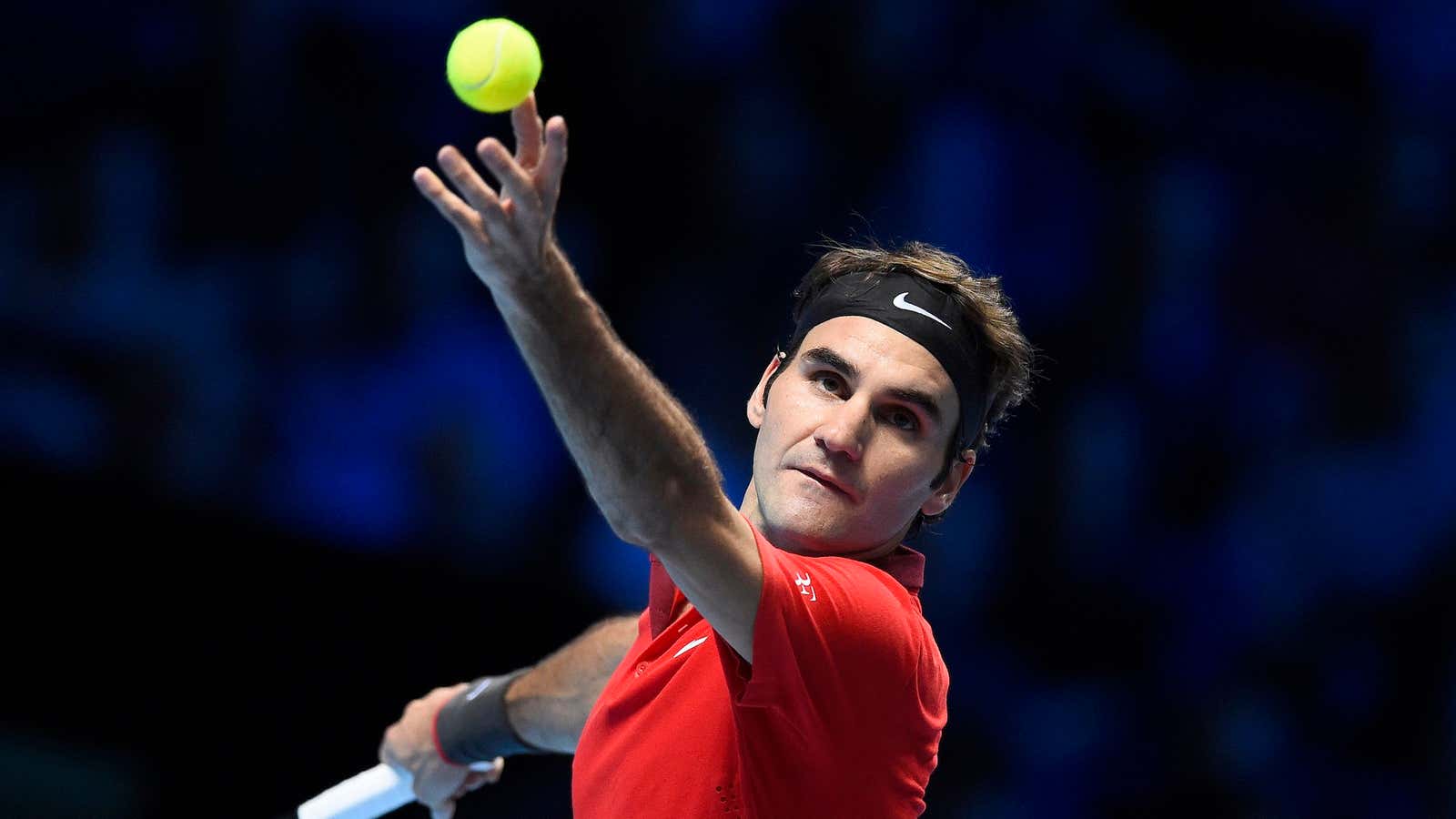Yesterday, Novak Djokovic was crowned the winner of the ATP World Tour Finals in London in anti-climatic fashion after his opponent, Roger Federer, pulled out of the tournament at the last minute with a back injury.
Being the consumate gentleman that he is, Federer came out to apologize in person—but what of the 18,000 people that paid to see the final? The tournament’s organizers convinced Djokovic to play an exhibition match against Britain’s Andy Murray, followed by a doubles match featuring Pat Cash and John McEnroe. All reportedly agreed to play for free. With this many people eager to see world-class tennis, the sport’s biggest stars knew that the show had to go on.
After Wimbledon, the French Open, Australian Open, and US Open, the World Tour Finals has come to resemble a fifth Grand Slam. It has been so successful that its creator, Chris Kermode, last year moved from being the event’s managing director to the executive chairman of the ATP governing body itself. More than 1.5 million people have been to London’s O2 Arena to watch the event since it moved there in 2009. But it wasn’t always so popular.
The event was originally called the Masters and started in 1970 as a showpiece tournament for the best men’s players, with no implications for their rankings and little serious interest among die-hard tennis fans. The season-ending tournament gained more relevance in the 1990s when it was given ranking points, but really came into its own in 2009 when it was renamed the World Tour Finals and moved to the banks of the Thames.
Unlike the Grand Slams, it’s a round-robin format featuring the top eight men’s players in the world, which garners a certain level of quality and none of the polite formality of, say, the first few days of Wimbledon. The event has also benefitted from what Andre Agassi describes as the Golden Age of the sport—Federer, Djokovic, Murray, and Rafa Nadal are players of the absolute highest quality, constantly pushing each other to new levels of excellence.
The event is now important enough that Murray played six weeks in a row to get enough points just to qualify for this year’s Finals. And with the success of the event has come calls for change; the O2’s contract to host the event expires at the end of 2015. The BBC says London has competition from three other venues, with “serious interest” from North America and Abu Dhabi. “I will not be chasing the cash to a venue that doesn’t have fans in it,” Kermode told the broadcaster. “This is the Super Bowl of the ATP World Tour.”
Kermode is in favor of keeping the in the tennis-loving British capital, albeit perhaps not for another seven-year term. ”There’s a school of thought which says events get stronger if they have roots in the same venue, in the same time zone, in the same arena,” Kermode said.
That said, the event he most often compares the World Tour Finals to—the Super Bowl—moves every year, with no ill effects to its popularity. In this, London may be a victim of its own success, creating a successful formula for other cities to exploit.
